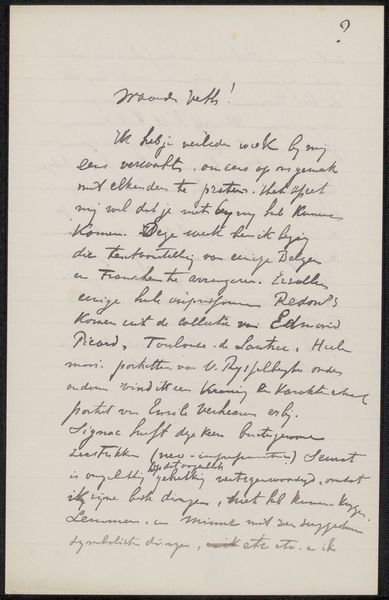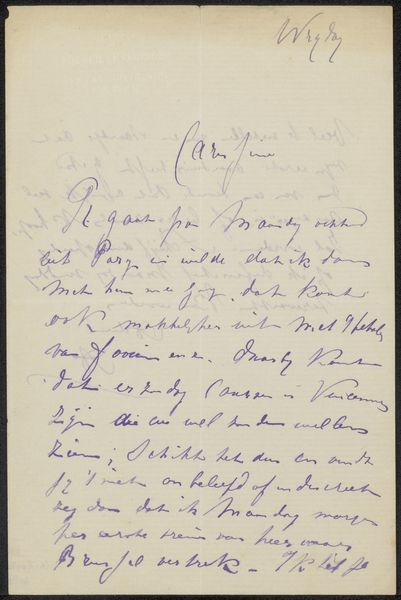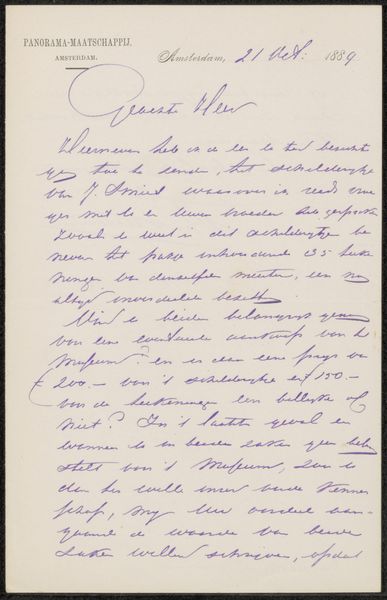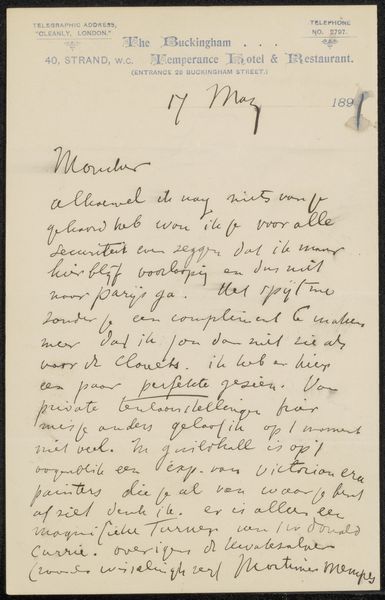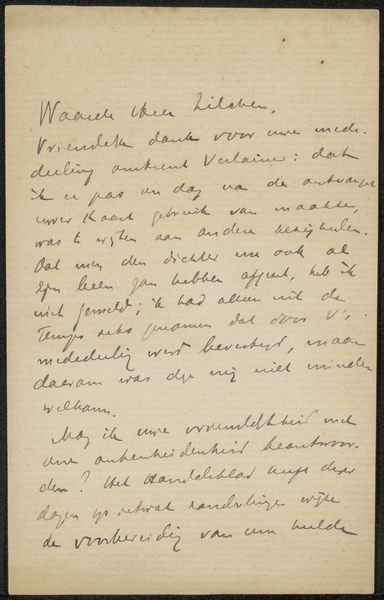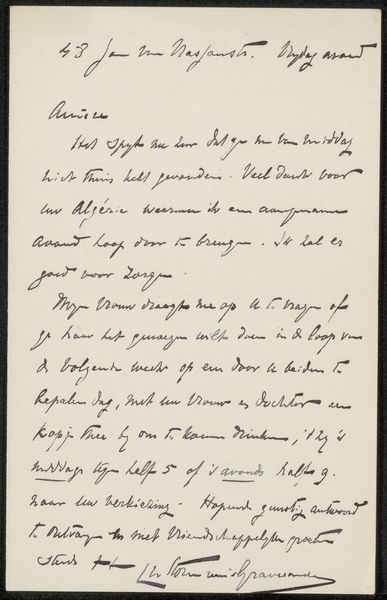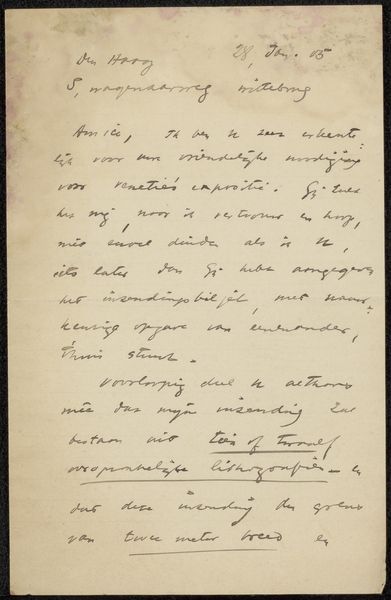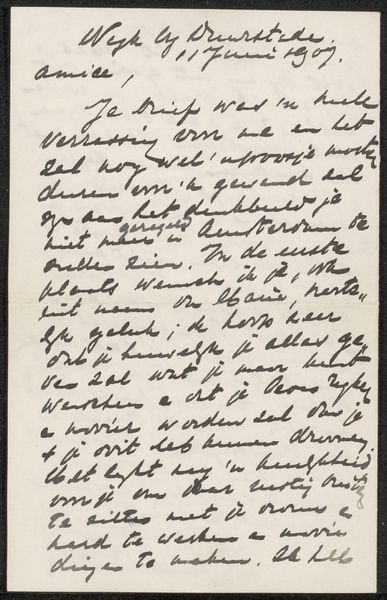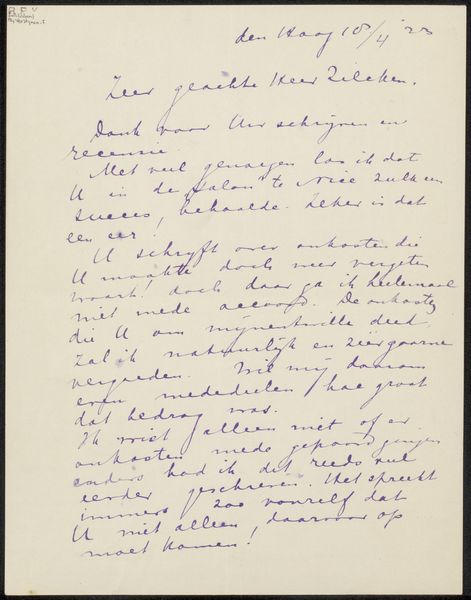
drawing, paper, ink
#
drawing
#
paper
#
ink
#
calligraphy
Copyright: Rijks Museum: Open Domain
Curator: Here we have Floris Verster's "Brief aan Philip Zilcken," possibly from 1890, housed here at the Rijksmuseum. It's a drawing done with ink on paper. Editor: It looks almost ethereal. The delicate script in blue ink gives it a dreamlike quality, as if capturing fleeting thoughts rather than concrete facts. It feels surprisingly intimate for a document likely intended for a more public life. Curator: Yes, that tension is central to understanding it. Observe the calligraphic choices. See how Verster uses pressure to create thick downstrokes and delicate upstrokes, building rhythm and a certain decorative flourish that elevates a simple letter to an artistic composition. Note the texture created where the ink bleeds slightly into the paper. Editor: Which hints at process—suggests speed, perhaps, a hurried but considered act. The materials speak volumes. This wasn’t about creating a lasting monument; it was a working communication, and a means of establishing his artistic identity through craft. Writing was central to nineteenth-century social practice. This material link between Verster and Zilcken tells a whole story of social networks and labor in producing the artwork. Curator: The absence of illustrations places total importance on the textual construction and the pure shapes of lettering and text blocks. Without representational imagery, the materiality and rhythm of the text carry all the expressive weight. Editor: I appreciate the immediacy and humanness inherent in the imperfections of the ink, the absorbency of the paper; it suggests a narrative of personal connection amidst the often-sterile realm of 'high' art production. The letter shows that art doesn't come out of thin air; it's physical labor from start to finish, from sourcing ink and paper, all the way to constructing the letter itself. Curator: Considering Verster's symbolist approach, this work shows even a common document transforms into something intensely personal. The visual language of the writing becomes the art itself, reflecting inner emotions more effectively than formal depictions might. Editor: I’ll carry that idea of the material of communication with me, as I explore what other dialogues can be seen through the artist's practice.
Comments
No comments
Be the first to comment and join the conversation on the ultimate creative platform.

